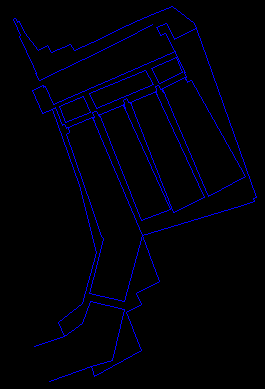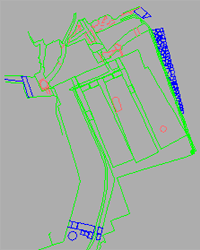|
History of Construction and
Use:
The fountain of Glauke was cut from the limestone ridge on
which stands the Temple of Apollo. The form of the fountain
is of a large cube roughly 15m north-south, 14m east-west and
7.5 m in elevation with an extension at the southwest. The interior
consists of four large reservoirs, I-IV of a drain basin (V)
and a smaller reservoir (VI). Water was piped from the south
to reservoir IV which extended a total length of 33m. to the
west and southwest. The water flowed from reservoir IV to III
by means of an opening through their partition wall near the
south wall. The same relationship existed between reservoirs
III and II.
The total capacity of the reservoirs
when filled was approximately 527 m3.
The north facade of the fountain was likely to have been characterized
by a simple architrave, doric frieze and pediment. The fountain
may have been destroyed by the Romans in 146 B.C. The Romans
later restored and repaired elements of the fountain.
DATE: The fountain of Glauke
is believed to date to the same time as the Temple of Apollo
in the sixth century B.C. and possibly as part of the same building
program.
Testimonia:
Bibliography:
- Hill, Burt Hodge, Corinth
I. vi: The Springs, Peirene, Sacred Spring, Glauke. Princeton,
1964.
Pictures
from the Glauke:


 

|

Figure 1
Restored plan of the Glauke fountain in Corinth, A.D. 150.

|







